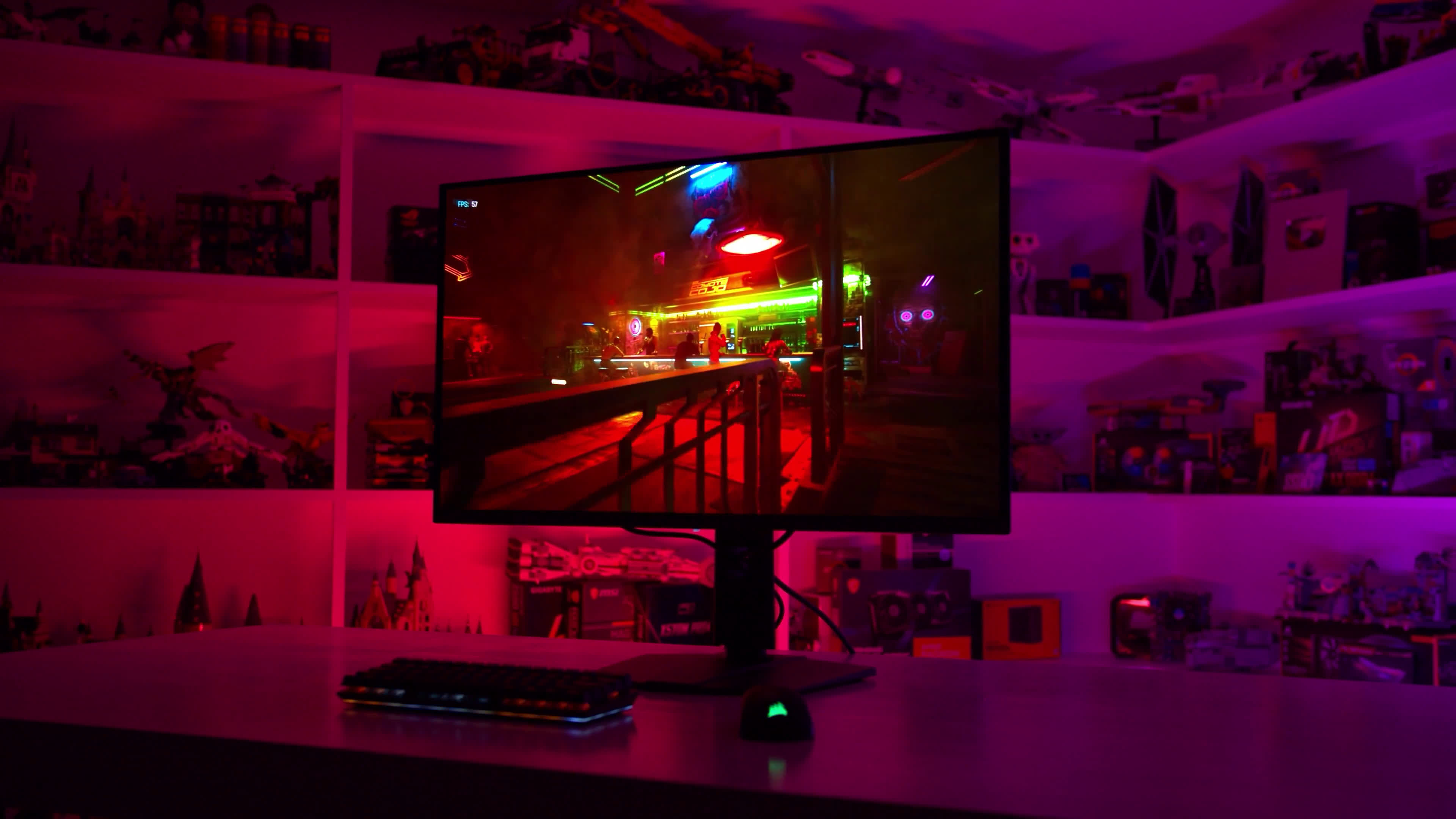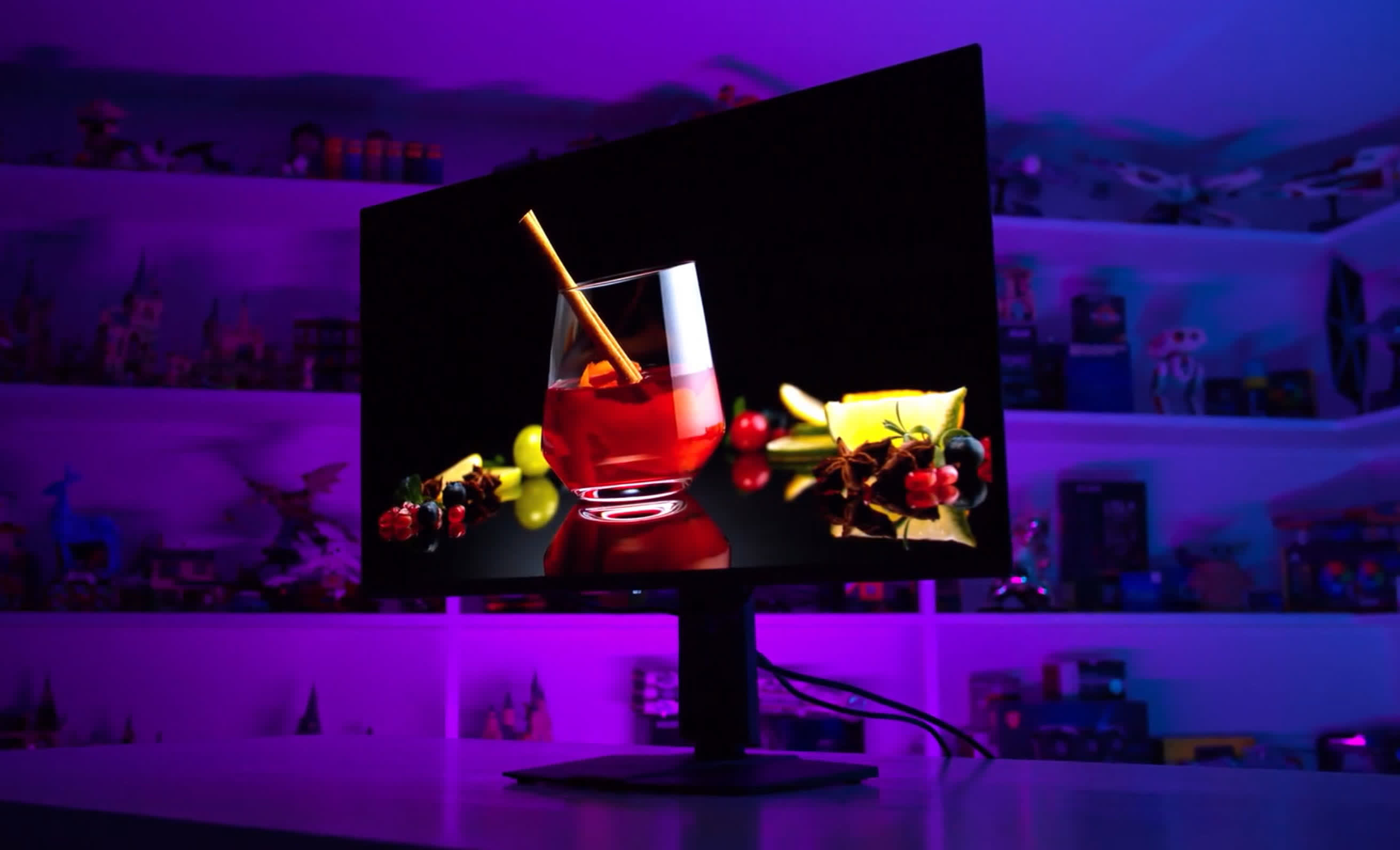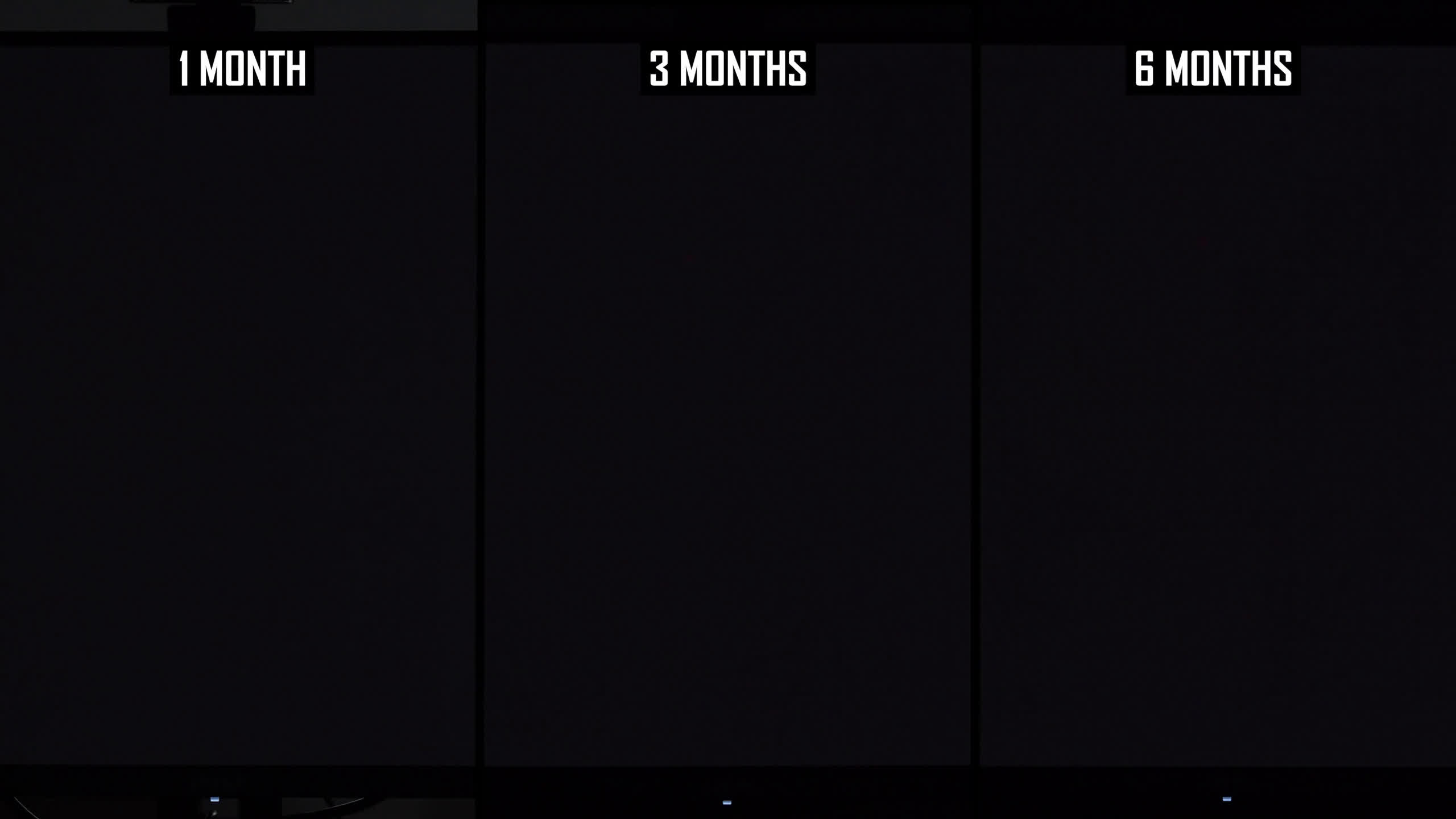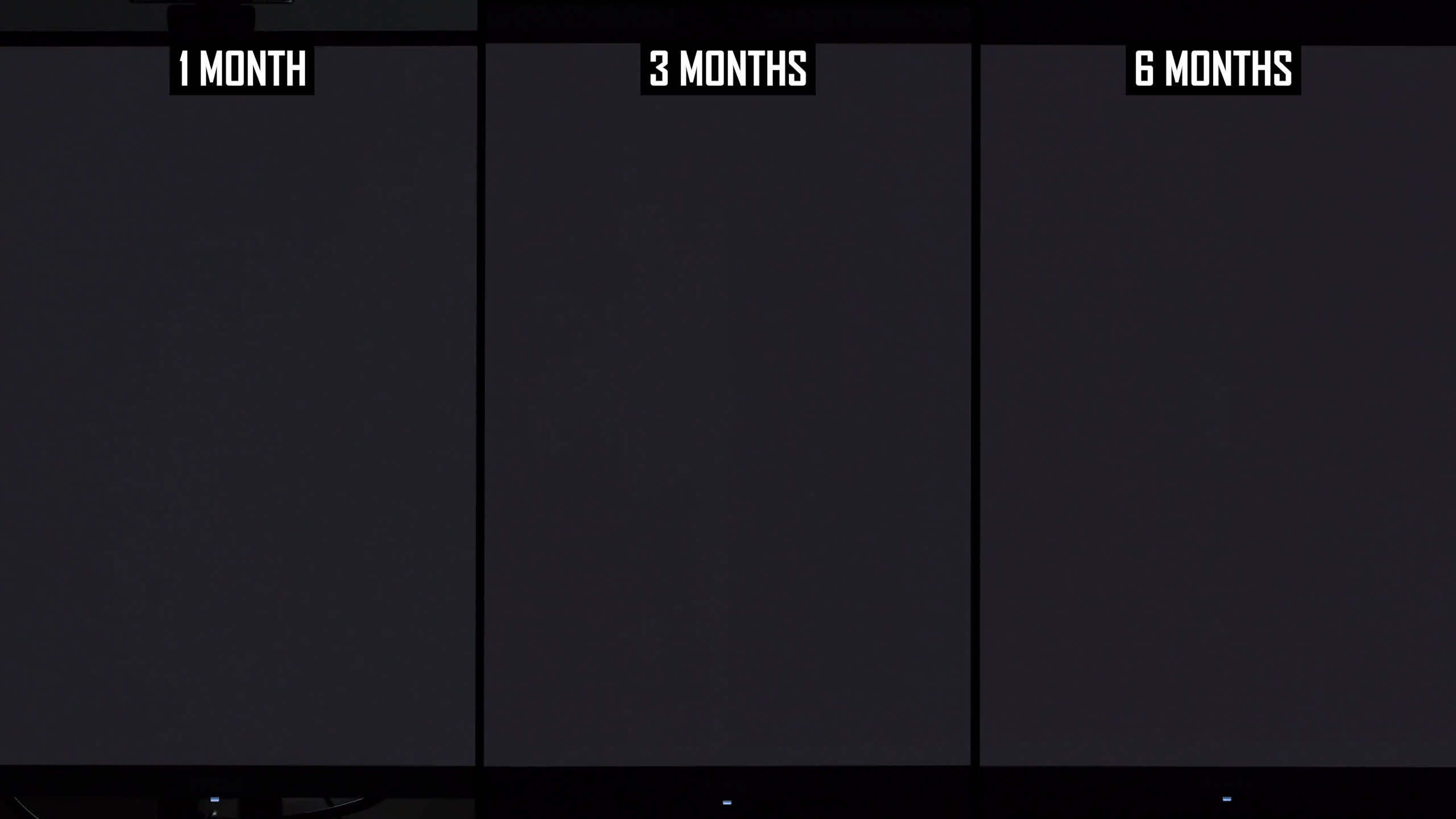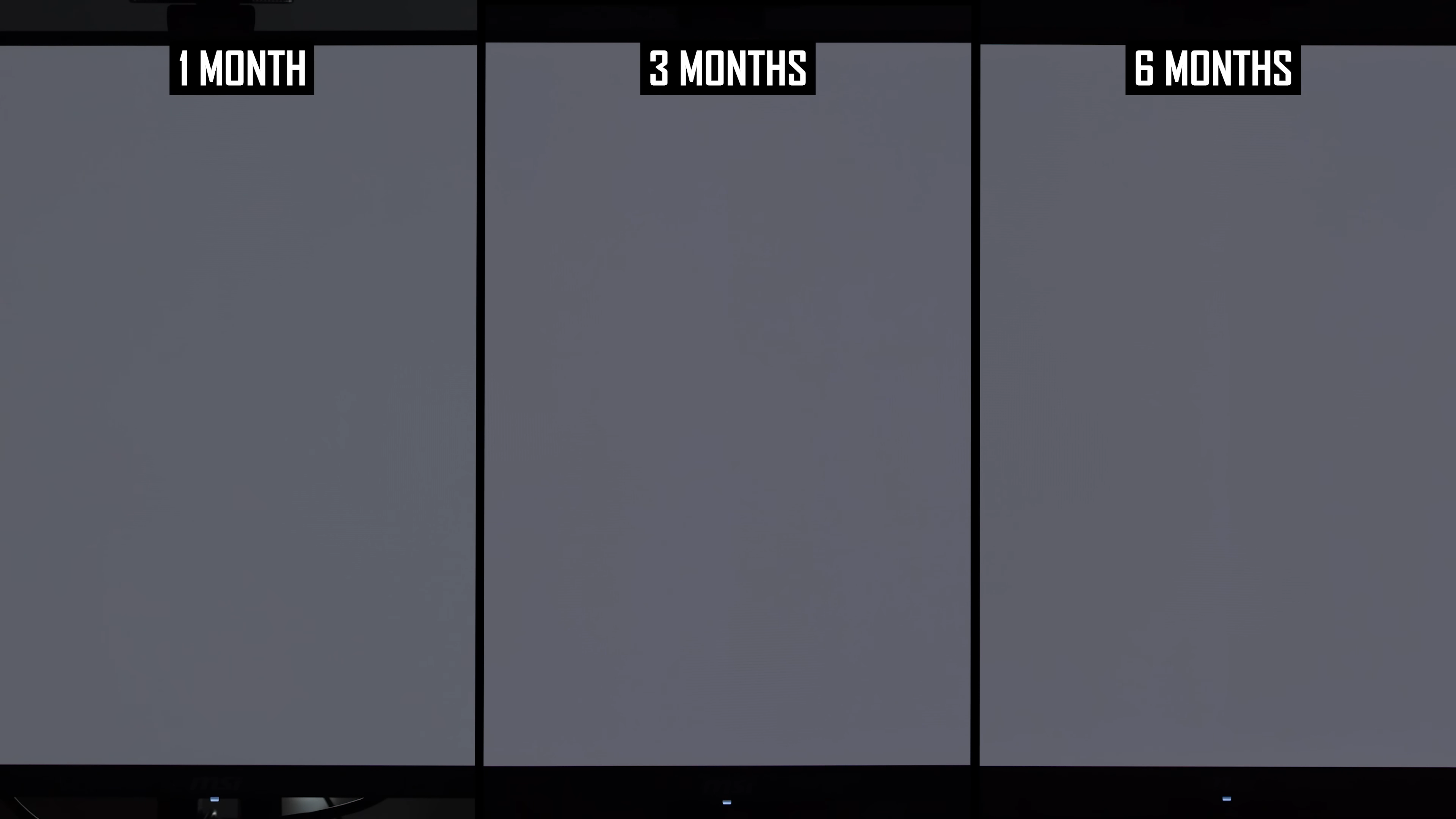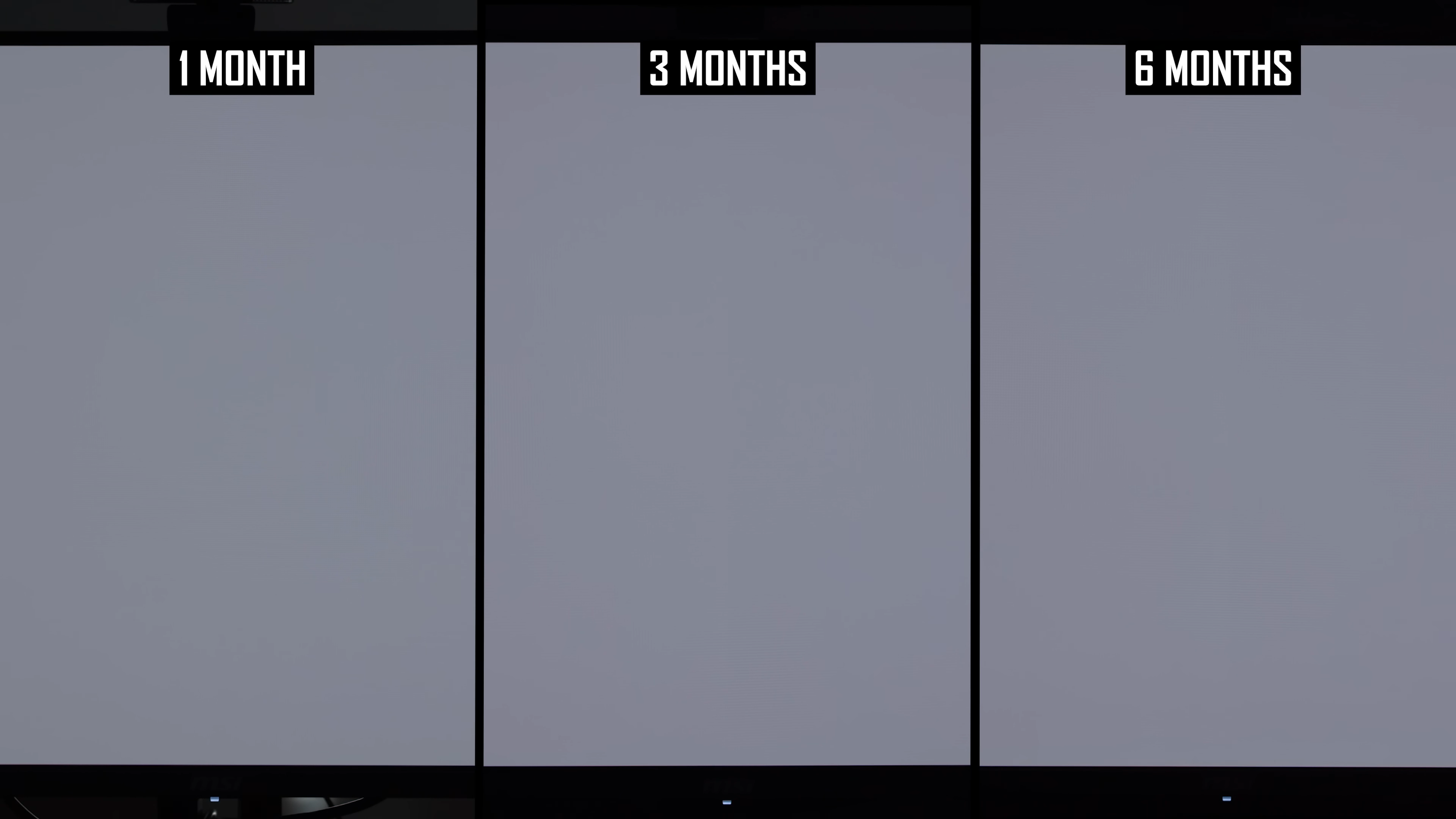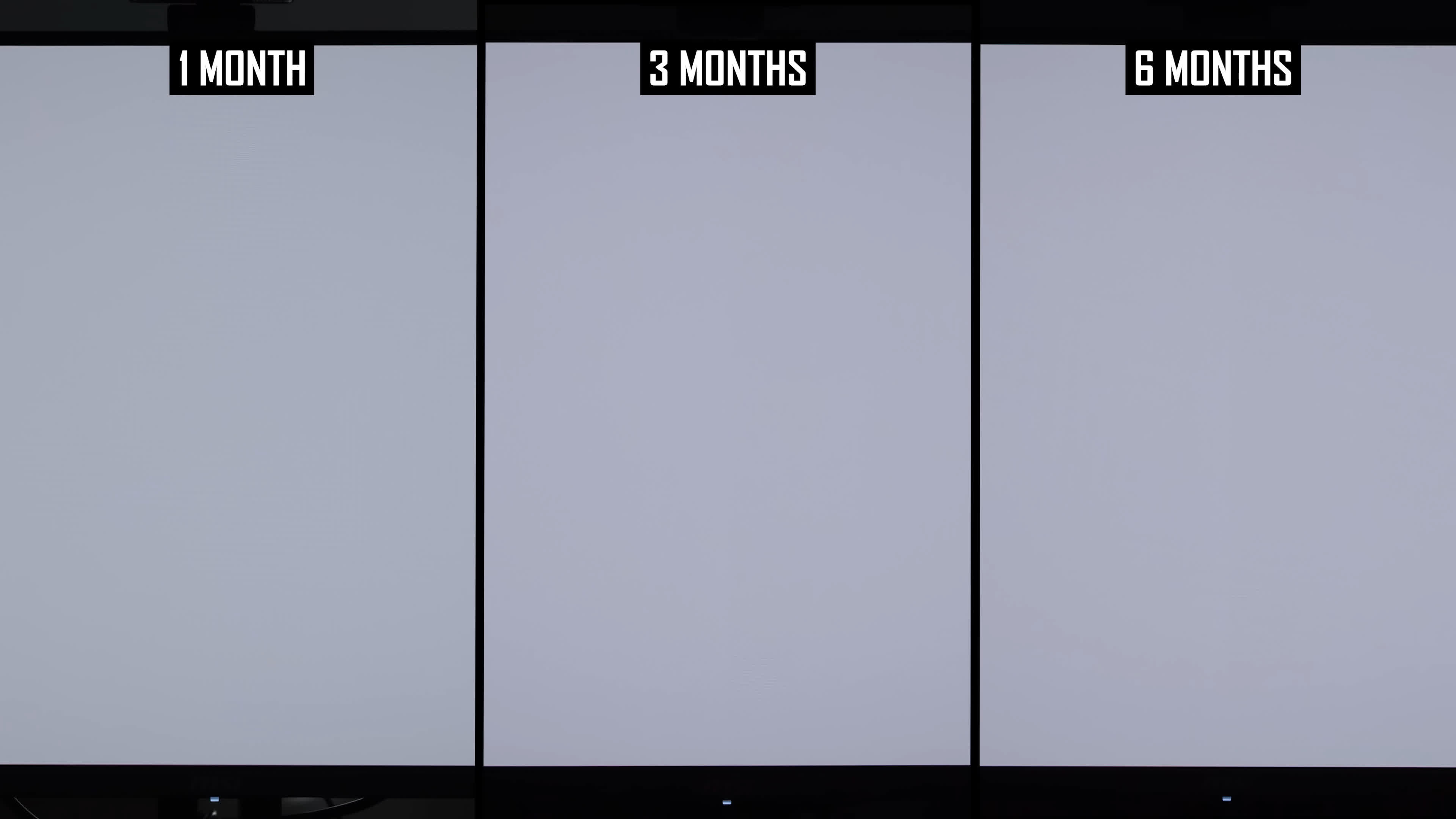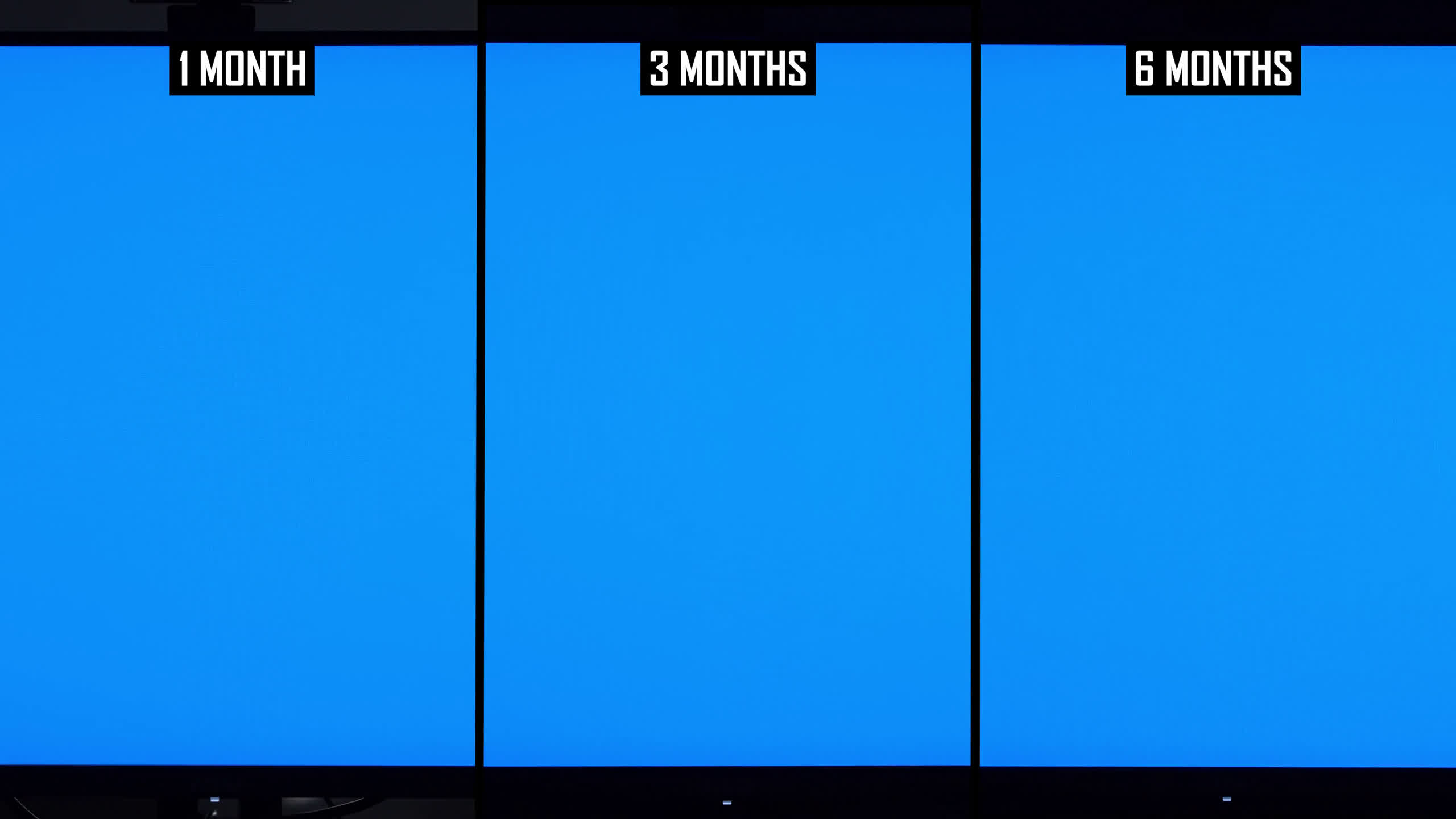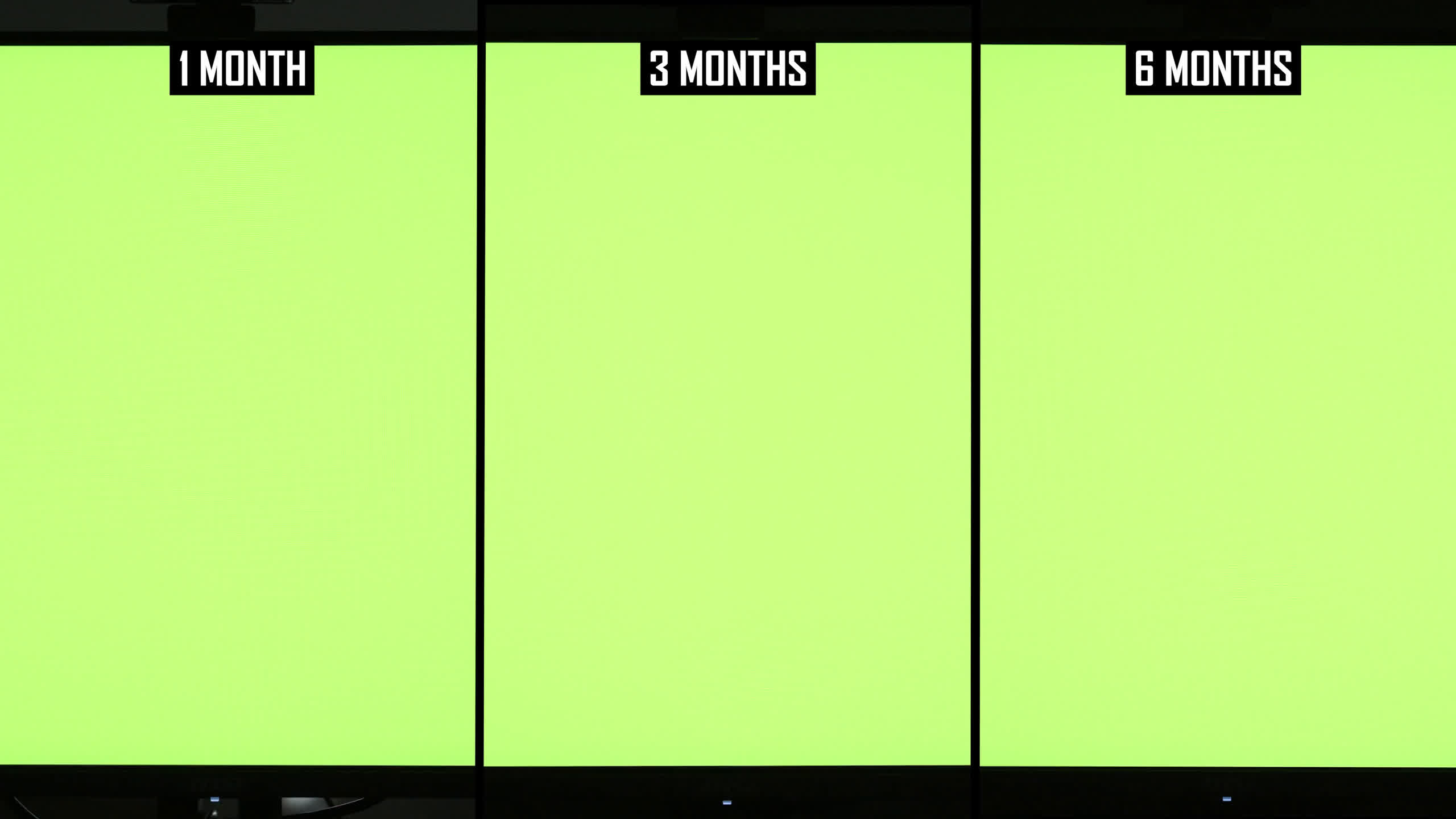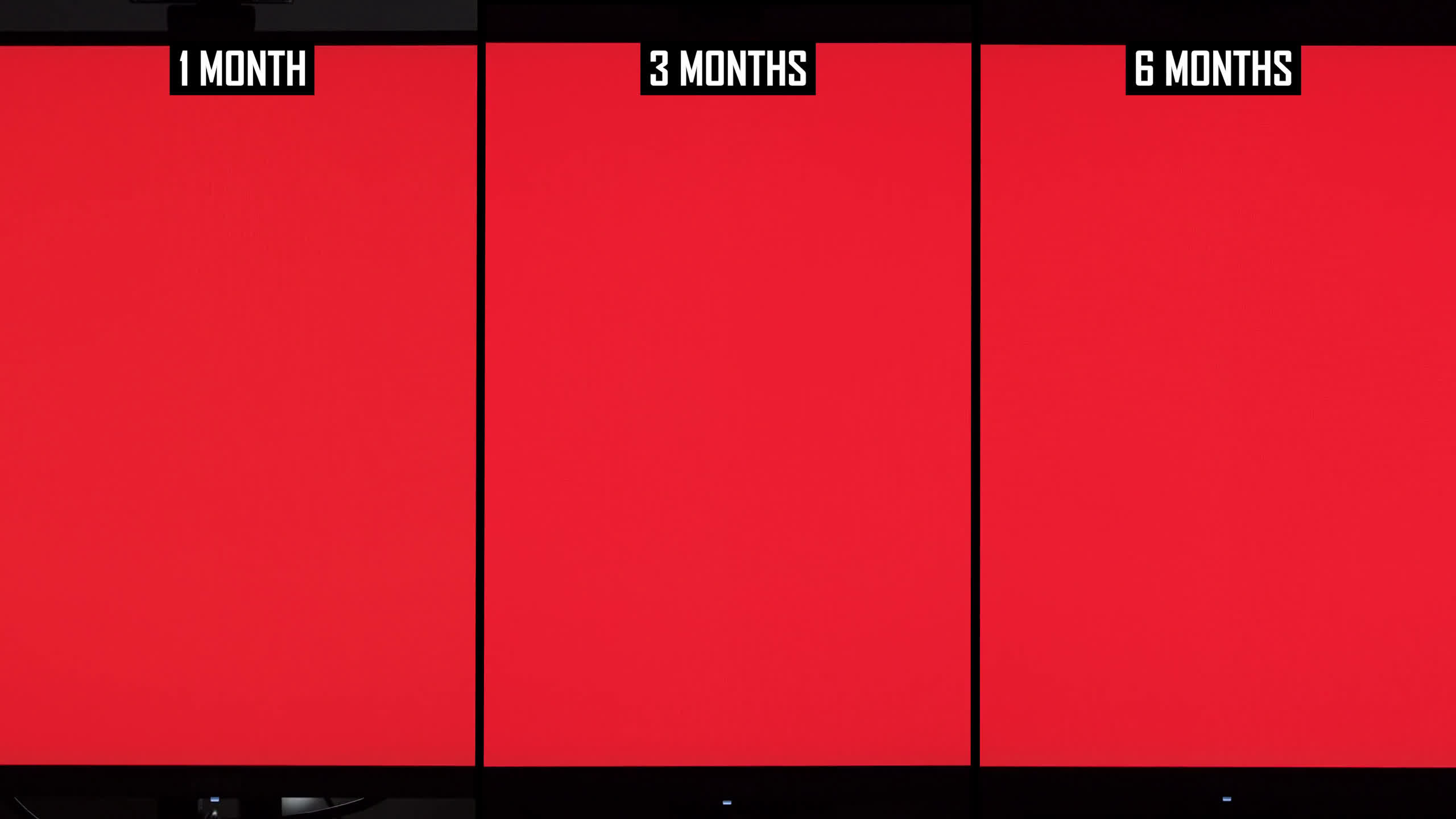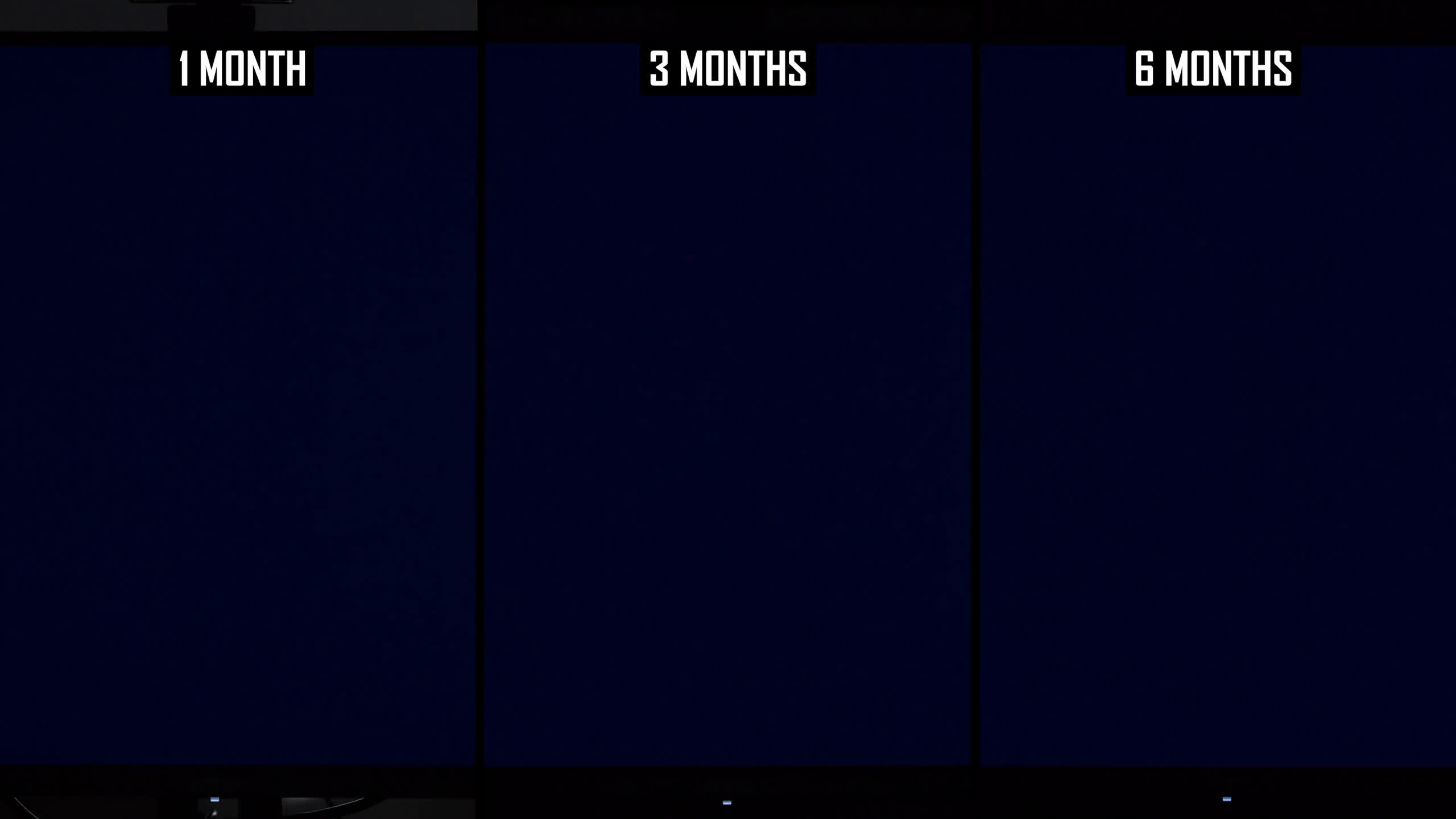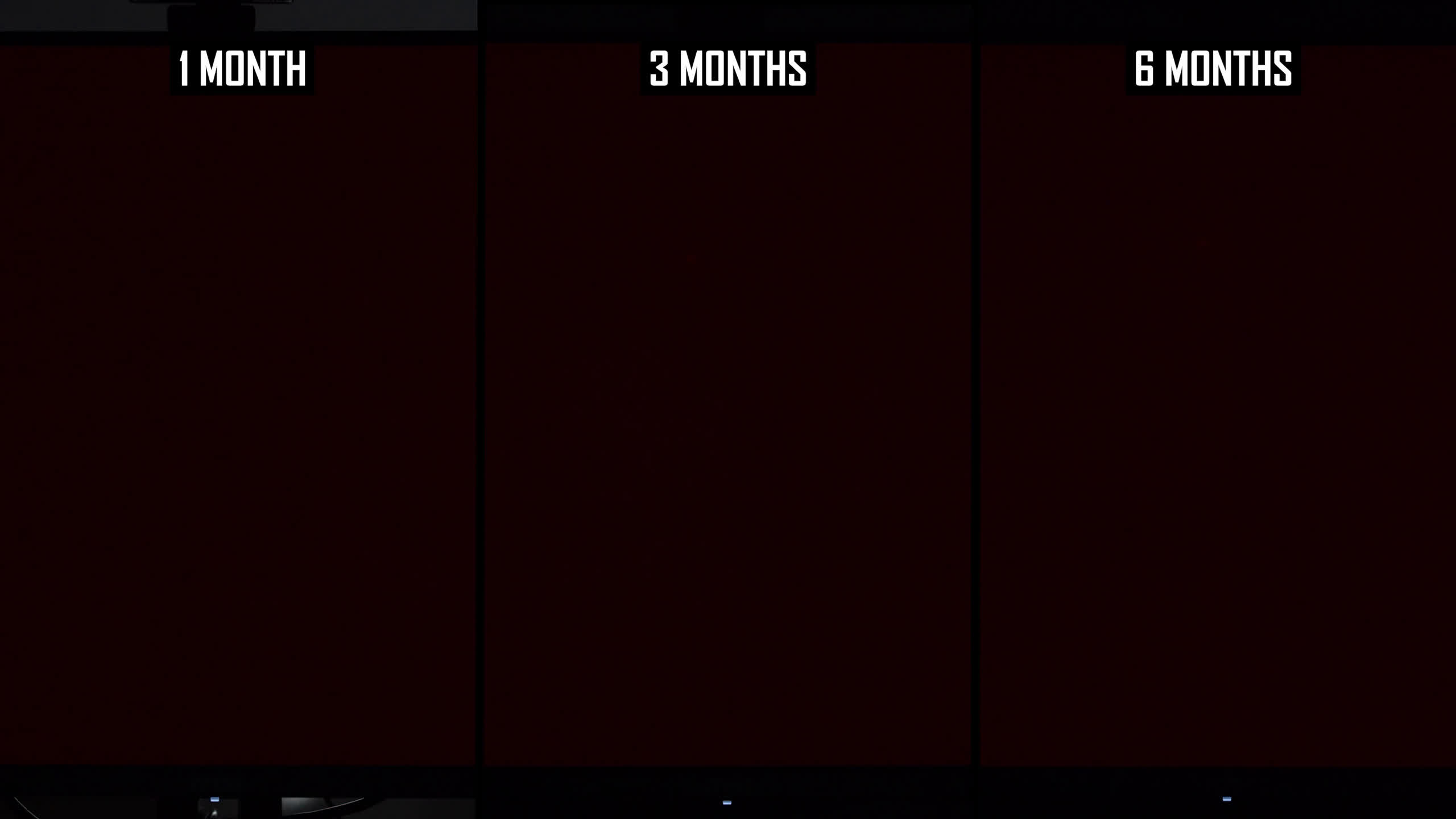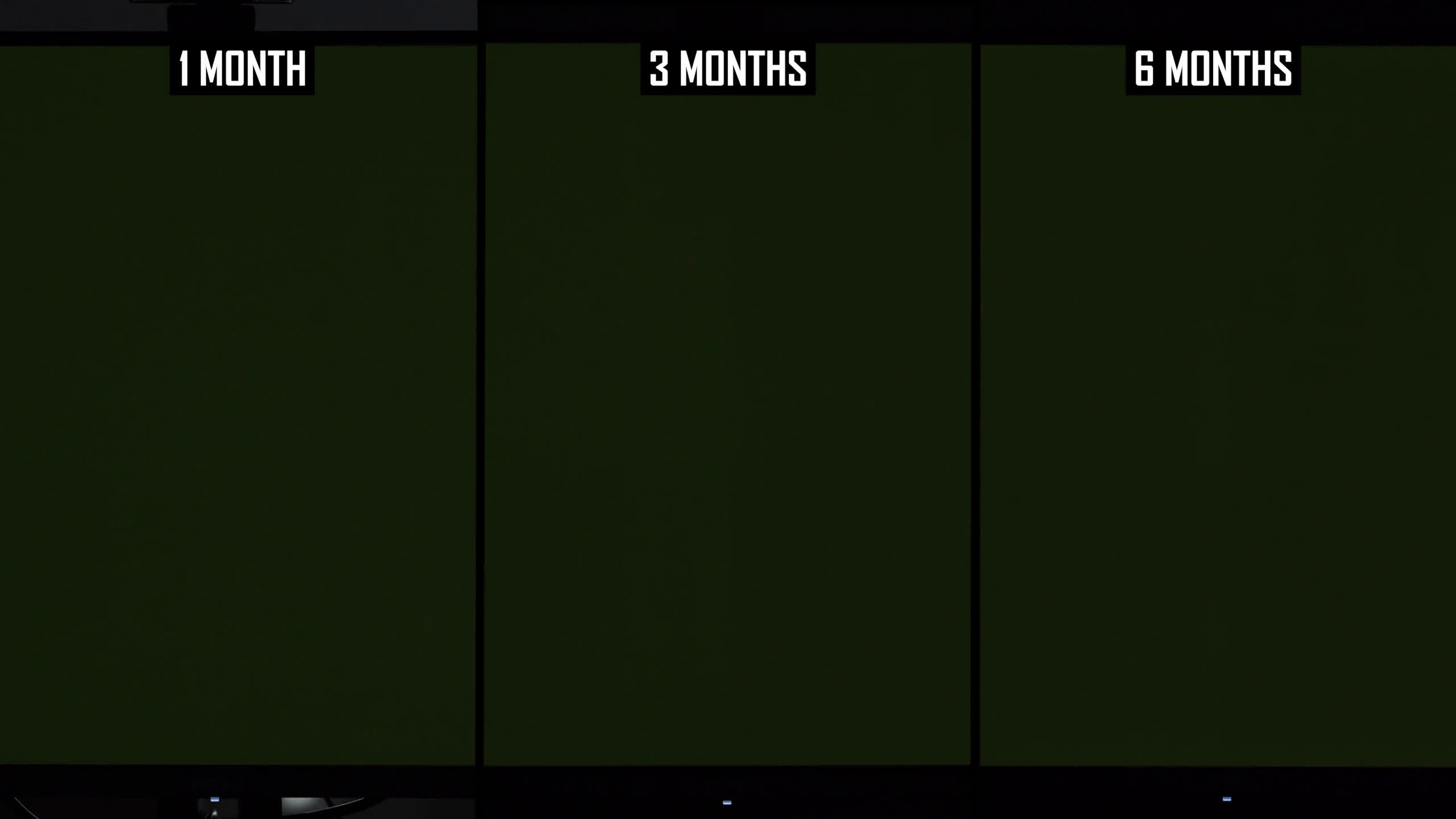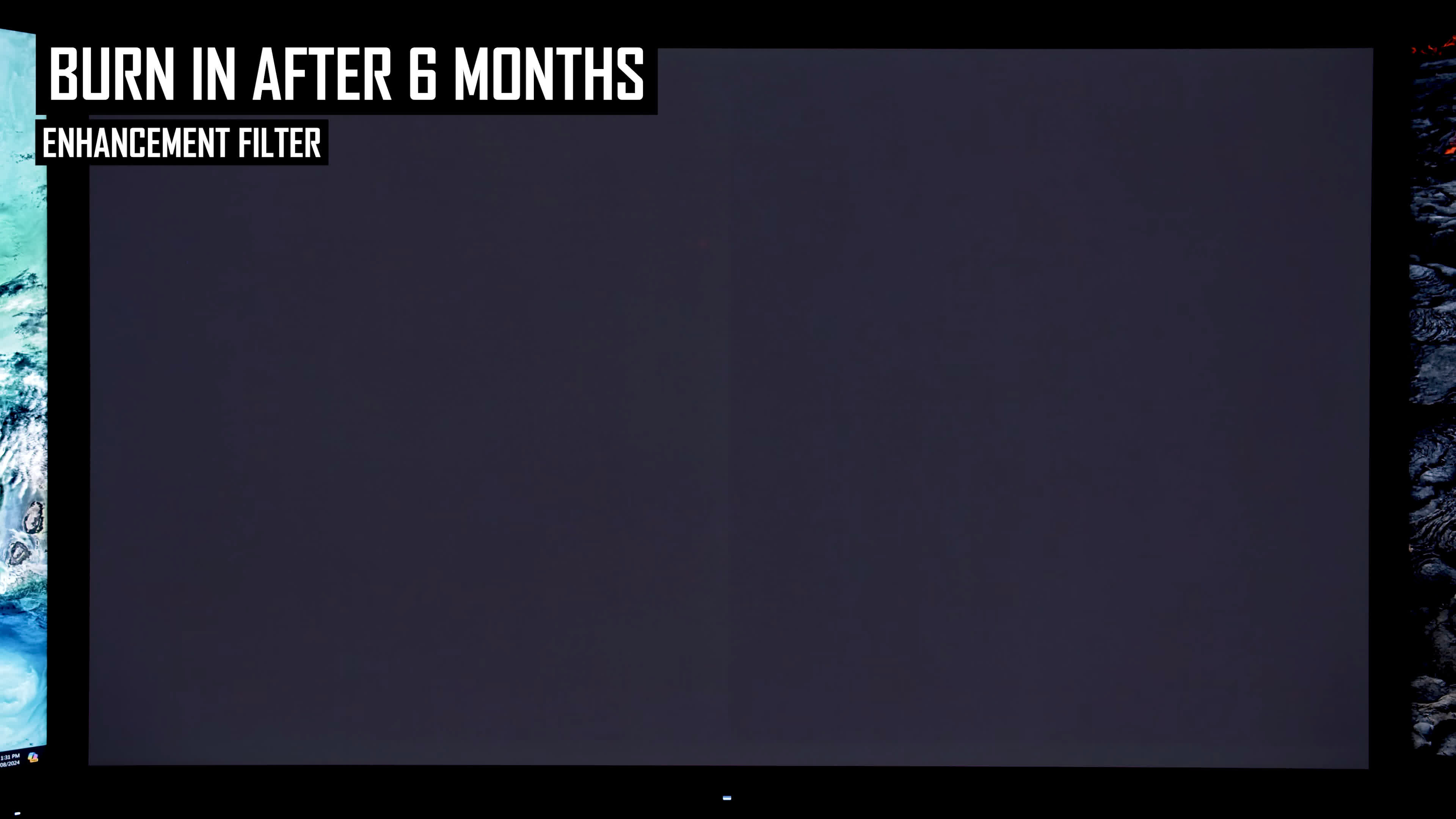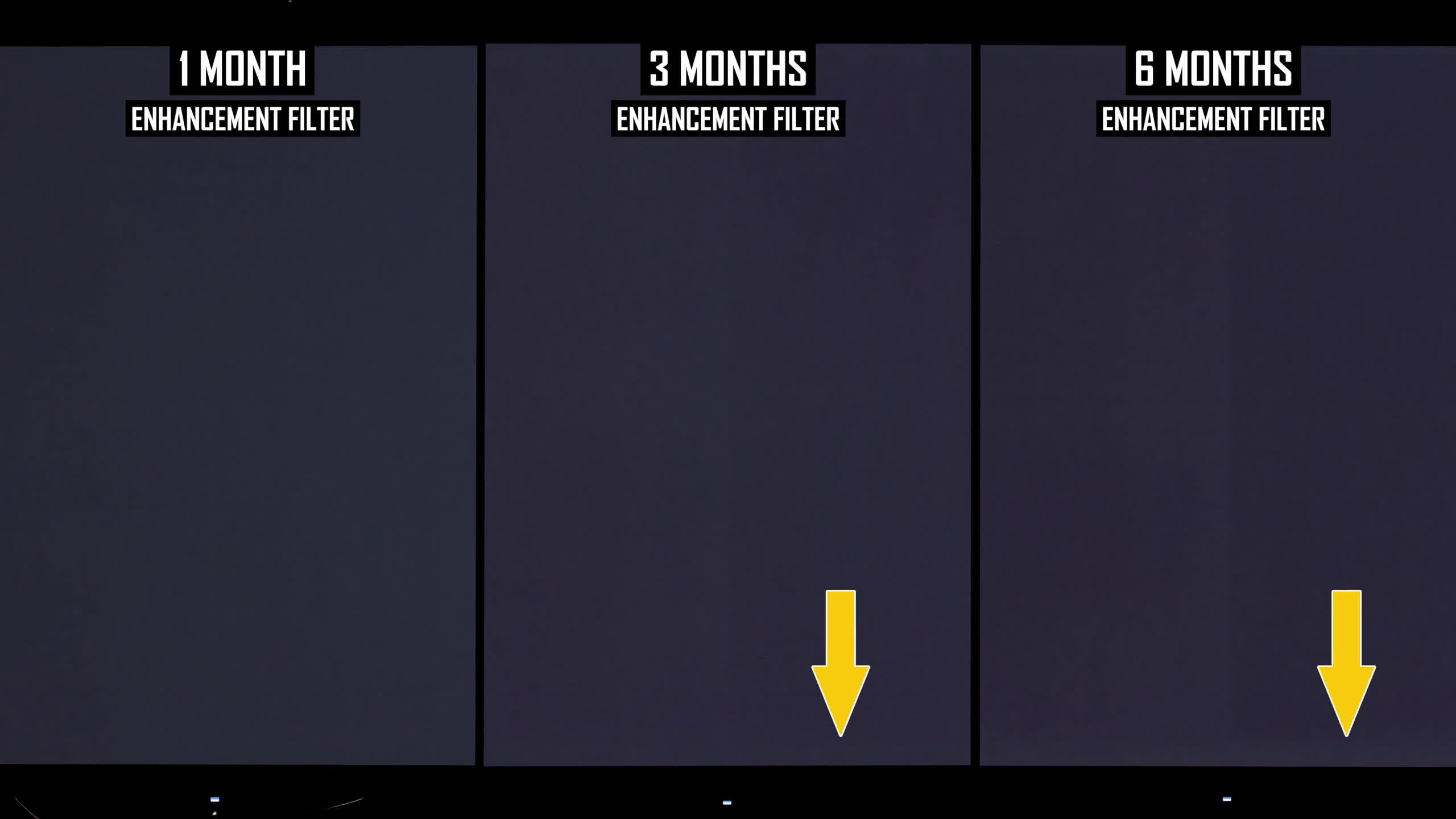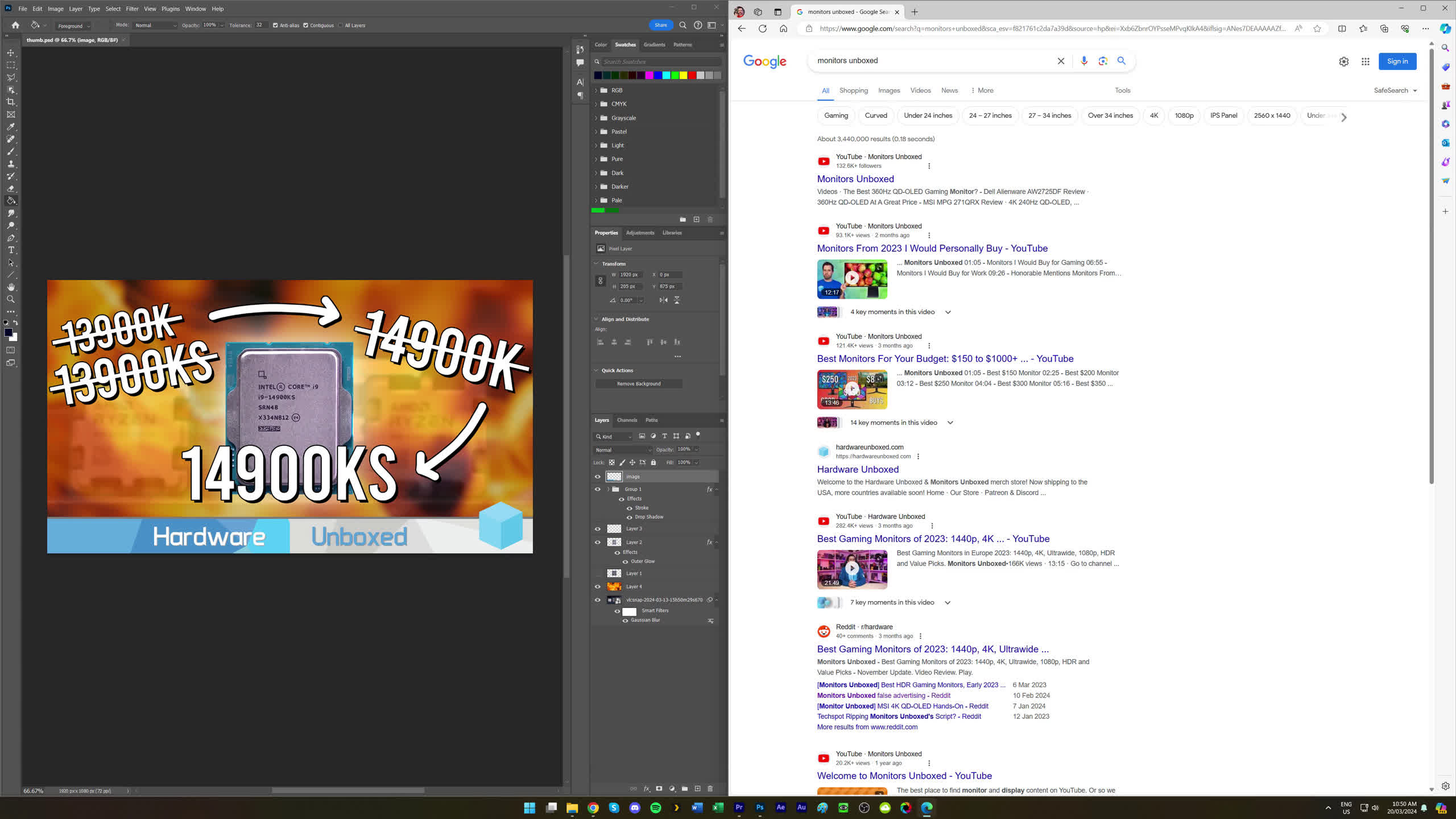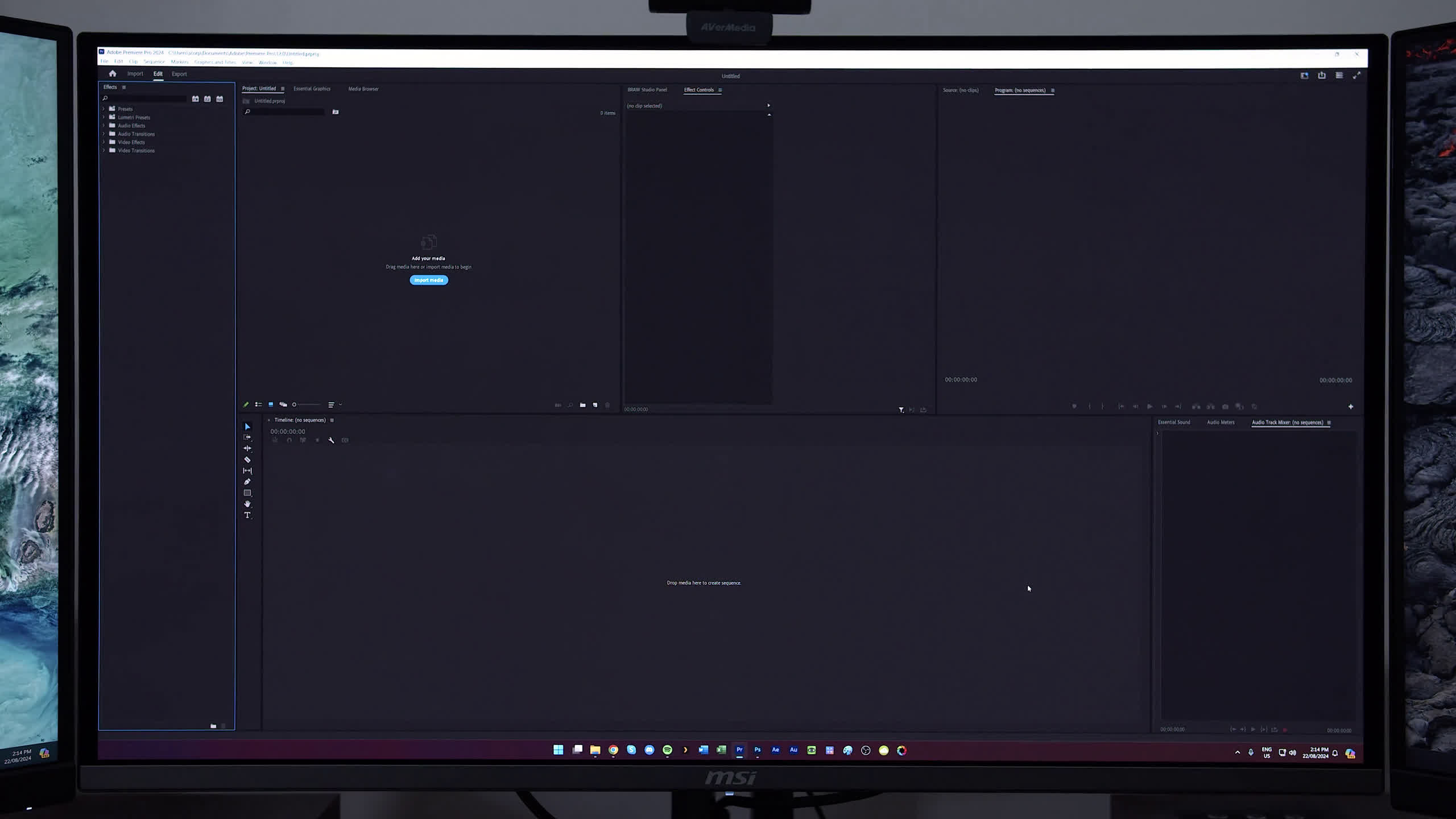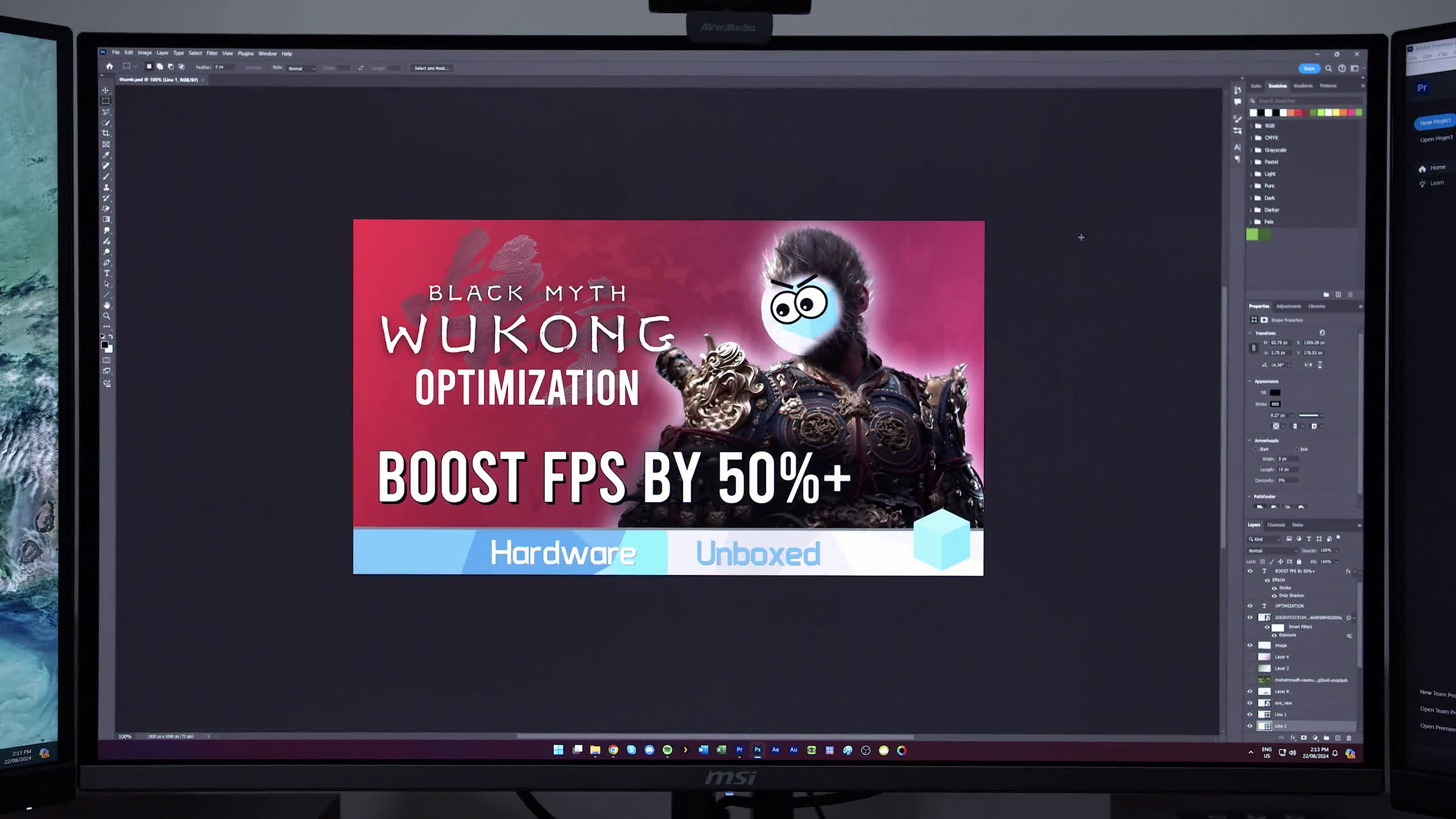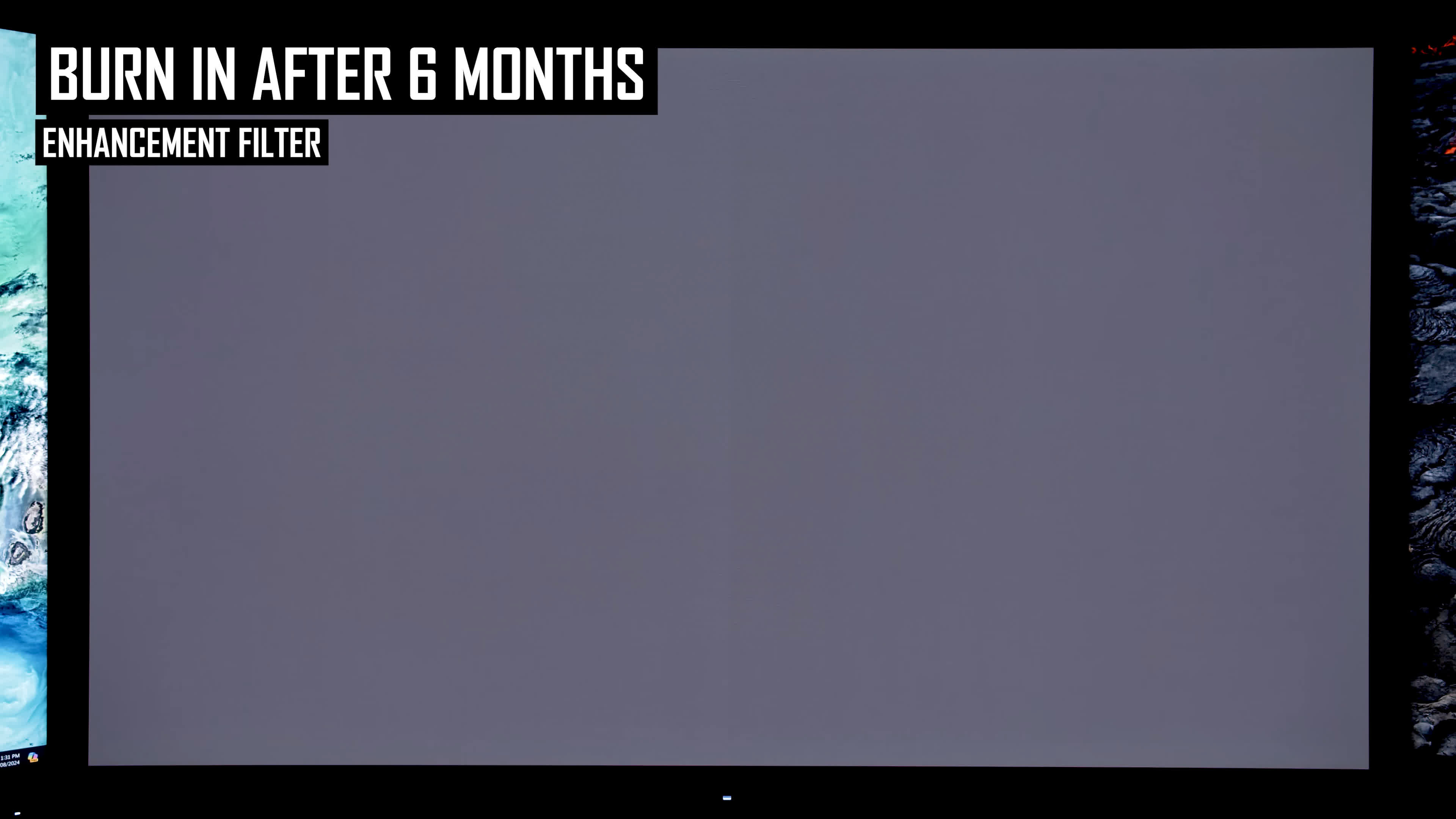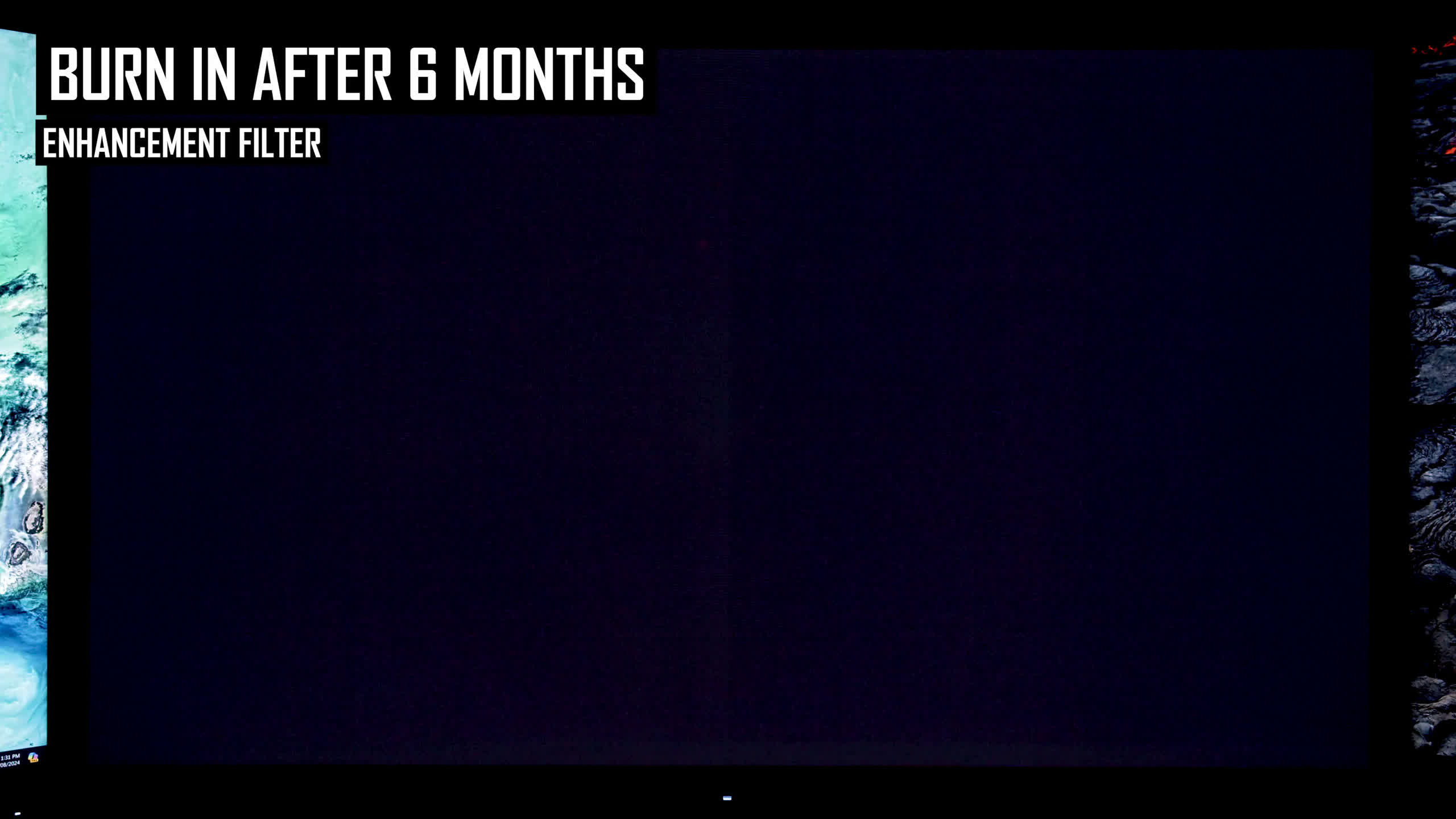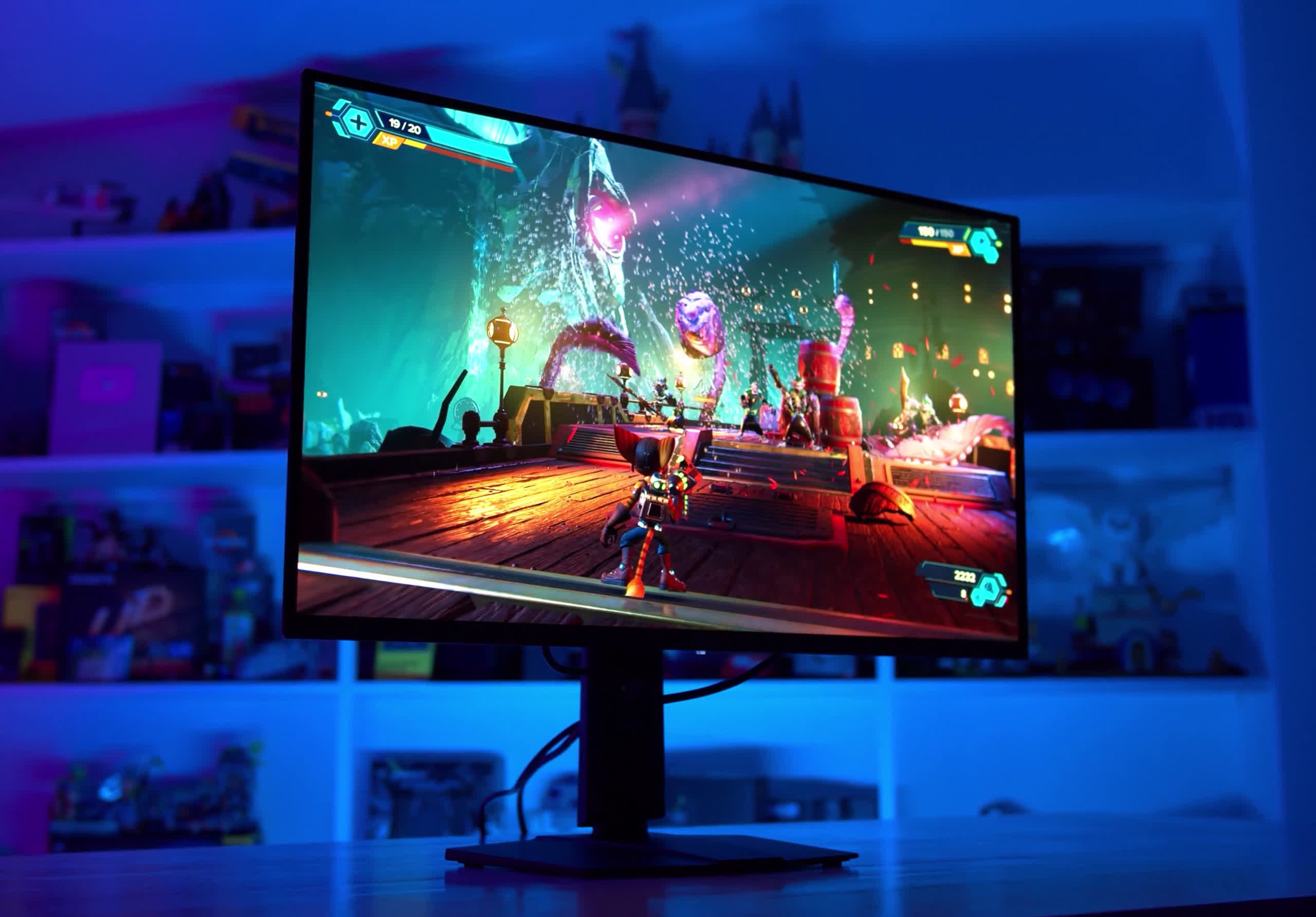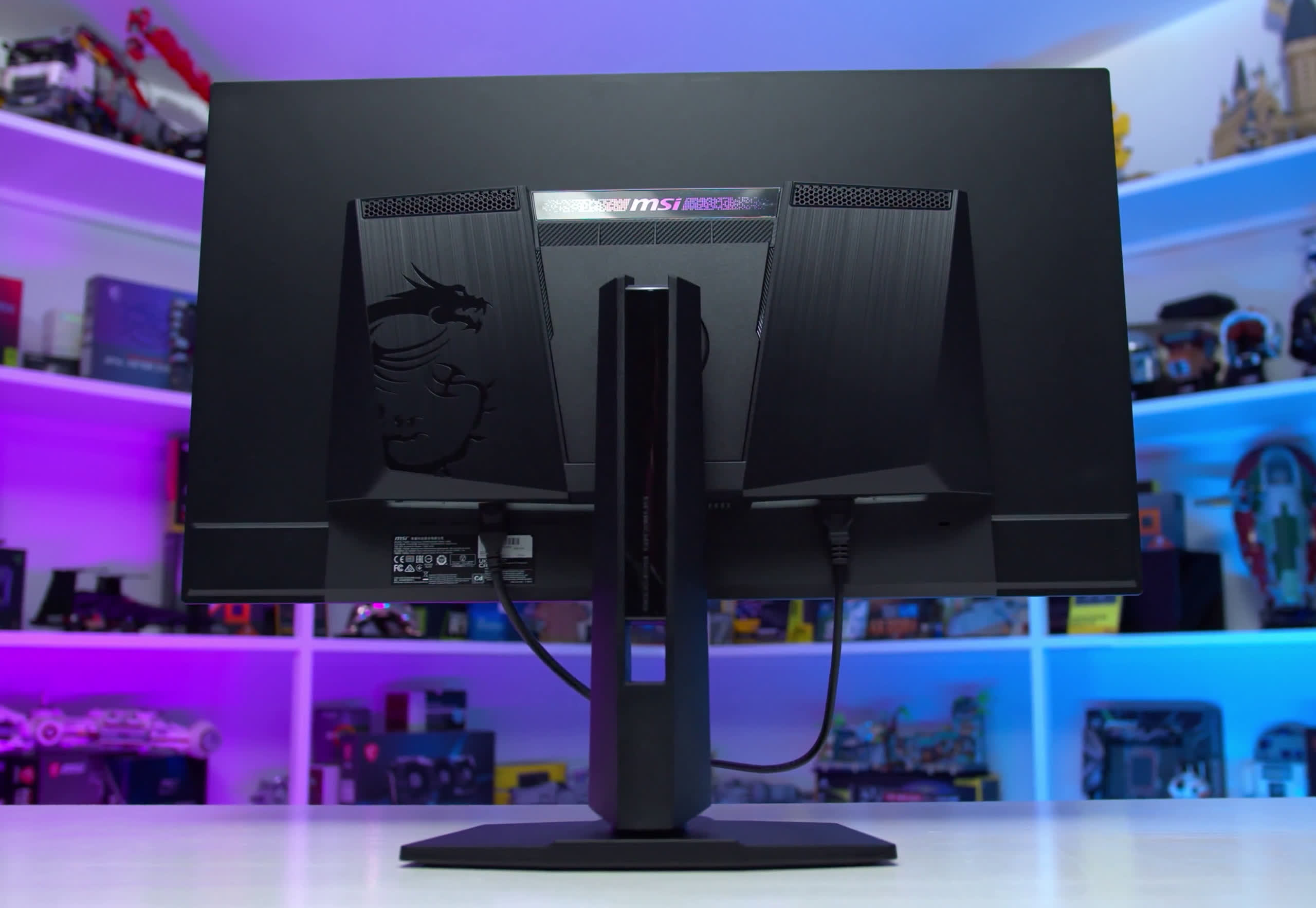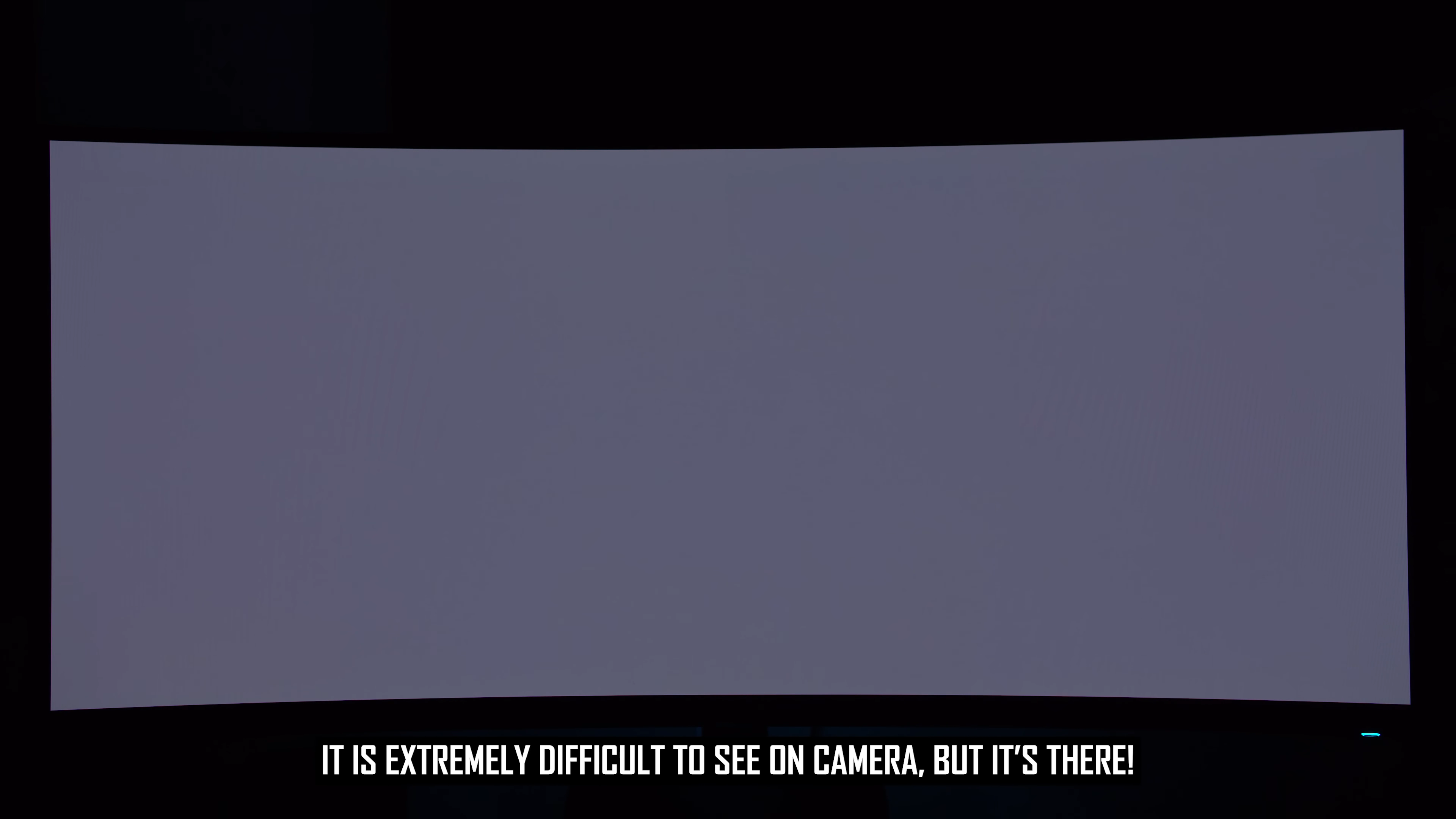We've been using the MSI MPG 321URX QD-OLED exclusively as a productivity monitor for the last six months, and it's time to check in to see how the panel is holding up in terms of burn-in. Not much has changed in how we've been using this monitor – we've really been pushing it with a worst-case usage scenario for OLED – but there have been a few changes compared to the last time we checked for burn-in.
If you missed the last two updates, we recommend going back and checking out at least the initial article to get an idea of the setup we're using and why we've chosen MSI's 4K 240Hz QD-OLED gaming monitor as our workstation display.
Essentially, the idea here is to perform a real-world test of OLED longevity in the worst possible configuration, effectively burning in the display on purpose. We swapped a 32-inch 4K IPS LCD for this new QD-OLED and changed nothing else about the setup – no dark mode, no screensavers, or anything like that – to see if OLED monitors can truly be used as LCD-equivalent productivity displays long-term.
I use my monitor more than 8 hours a day, sometimes continuously, with no breaks for the display to turn off and rest. This leads to hours upon hours of static usage in applications like web browsers, Microsoft Office (including Excel), and production tasks like Adobe Premiere and Photoshop. With virtually no content consumption and zero gaming in our daily use of this display, this is not how we recommend using an OLED at all, though it's a use case that has been perfectly fine for LCDs for a long time.
After one month of usage, the MSI 321URX showed no signs of burn-in at all, which was expected. At that point, we'd used the monitor for about 200 to 250 hours. After three months, we started to see faint signs of burn-in, and by that time, we'd used the display for approximately 650 to 750 hours with 71 panel compensation cycles.
Six months into this experiment, we estimate the usage to be between 1,200 and 1,500 hours, and the monitor indicates that it has run 141 compensation cycles. This aligns with what we reported previously – about double the usage and about double the compensation cycles. We're still seeing around 9 to 10 hours of usage at 200 nits of brightness per compensation cycle.
As we mentioned in the last update, the recommended rate for panel protection cycles is every four hours, so in our typical usage, it's running less than half as often as is ideal. However, this is a totally realistic scenario for someone using this display for full-time work, especially if you don't put the monitor to sleep during breaks. We've set the display to sleep after two hours, which is far longer than we would recommend for general OLED use, but it's the same setting we used for our LCD.
Burn-In Results After 6 Months
Now, let's review the burn-in progress by comparing results after one, three, and six months, focusing on the center of the display where the most signs of burn-in were observed previously.
For the darkest greys, there's not much difference between each of the months, with burn-in not significantly affecting deep shadows. A few steps up the greyscale range, and there is a very faint line down the center of the display, with little to no difference between the three and six-month examples.
By the time we reach the 4th or 5th greyscale example in the lower range, there's a small increase in burn-in between the three and six-month marks, but it's not drastically different between those months. The line down the center of the screen, which separates two side-by-side apps in Windows, is a bit more defined and noticeable after six months, though it's not drastically worse after double the usage.
When we reach the middle greys, the faint line is still visible and a little more defined after six months compared to three months, but in this range, the line is harder to spot than in darker greys. For brighter shades and closer to white, there's really no visible burn-in at all, even after six months.
This is also true when viewing fully saturated colors. When displaying reds, greens, and blues, there is no visible burn-in. Burn-in starts to become visible when viewing darker colors, and here we can separate the burn-in components by subpixel.
Looking at blue, there's slightly more burn-in after six months compared to three months, though this subpixel seems to be holding up well. The red subpixel has also degraded slightly more, but not to the point of being overly visible, even in these stress tests. However, the green subpixel shows clearly more burn-in than the other subpixels, though it's still faint overall, with not much difference between the three and six-month marks.
The biggest difference we've noticed between the three and six-month updates is that the taskbar area is showing more visible signs of burn-in now than three months ago. We're not hiding the taskbar during usage, but it is set to Windows' dark design (with light mode for applications). While it's difficult to see in some of the dark grey examples we captured, it's visible in real life.
With the burn-in enhancement filter, you can see that while the line down the center of the screen isn't substantially different between three and six months, the taskbar area is more noticeably affected. Flicking between footage with the filter turned on and off highlights this difference more clearly. A similar look at the three-month footage shows some impact on the taskbar area, but not as much as after six months.
However, as we're almost always looking at a screen with the taskbar in place, this burn-in has yet to have any significant visible impact. Even when viewing full-screen videos or applications, it's hard to notice unless the entire screen is static and displaying a dark shade. It's not ideal to see visible taskbar burn-in after approximately 1,300 hours of use, but it's also not terribly problematic.
What we are starting to notice, though, is the vertical line down the center of the screen. In applications with a baseline dark grey background, the line is definitely visible, though not particularly distracting. For example, in Photoshop and Premiere, which we use frequently, we can spot this line at times. Typically, it requires most of the screen to be relatively dark, as bright sections – like when working on a thumbnail in Photoshop – tend to hide the issue and make small differences in dark areas harder to notice.
It's not at the point of hindering our daily use and has little to no impact on our workflow, but it wouldn't be happening with an LCD after 1,300 hours of use. After another six months, we don't expect this line to become less noticeable, so it's likely going to be a visible artifact throughout the rest of our time using this QD-OLED.
As for screen brightness, there's been no reduction in peak SDR brightness across these six months of use. As of today, our display is capable of 243 nits of full-screen white brightness, compared to 238 nits when we first reviewed the monitor. So, it's actually 2% brighter now, though this could be due to slight differences in meter position, calibration settings, and so on. Over time, we expect that compensation cycles and burn-in prevention features will reduce peak brightness to maintain display uniformity, but that hasn't happened with our unit yet.
What's the Damage So Far?
What should we make of these burn-in results after six months? As expected, the monitor is showing visible signs of burn-in after 1,200 to 1,500 hours of exclusive static app usage. There's a faint line down the center of the monitor, corresponding to where we snap apps side by side, and there's some burn-in around the taskbar area.
Compared to our three-month update, burn-in has gotten slightly worse for the vertical line and moderately worse for the taskbar area. However, burn-in isn't having a significant impact on our usage of the display, and it's close to, though not quite, a non-issue.
1,200-1,500 hours of use is equivalent to eight hours a day, five days a week, for 30 to 38 weeks. Based on this, we anticipate that with full-time productivity work during normal work hours, using the monitor in a bright configuration with no steps taken to minimize burn-in, burn-in will likely start to become visible around six months after you begin using it.
Running the monitor in a more OLED-friendly configuration, like using dark mode, a screensaver after five minutes of inactivity, and a lower brightness level, should extend the lifespan substantially and prevent burn-in from becoming noticeable after six months. We can't say exactly how much impact these changes will have, but we believe that more friendly usage conditions would more than double its life.
Burn-in with OLEDs is also directly related to hours of usage and is cumulative. So, if you only use static apps for four hours a day, you should expect to see your lifespan double. However, mixing in four hours of gaming with four hours of static app usage is unlikely to improve burn-in by running a more varied workload – you'll still see 1,500 hours of cumulative static app usage after a year of daily use, which would result in similar burn-in to 1,500 hours of app usage where the monitor is only used for static apps.
In other words, you can't reverse burn-in on an OLED by playing dynamic content occasionally to "clean" the screen. However, dynamic content is unlikely to cause burn-in on its own.
While these burn-in results are not ideal for heavy productivity users, we will continue to advise against using OLED for those cases. However, the results aren't too bad for people primarily buying these screens for gaming.
For example, if you do 15 hours of web browsing a week on your monitor in addition to gaming and watching videos, you're probably looking at around two years of usage to reach the same results we've seen after 1,200 to 1,500 hours. That's assuming you take no steps to mitigate burn-in. If you enable dark mode and avoid running the monitor at 200 nits, you could likely extend that to three or four years, and by then, the monitor will still be quite usable. This aligns with what we've observed on the Alienware AW3423DW, which has shown significantly less burn-in than the MSI 321URX despite being used for over two years, primarily for gaming.
This experiment will continue for many more months, and we will provide further updates on how the burn-in progresses in the coming quarters.
